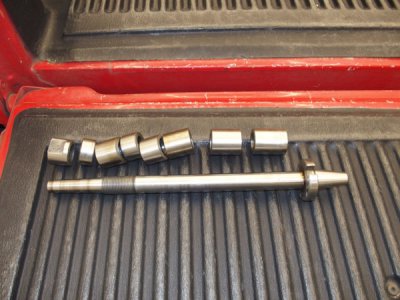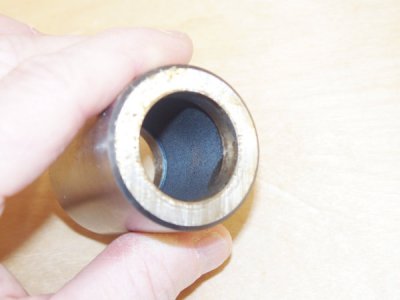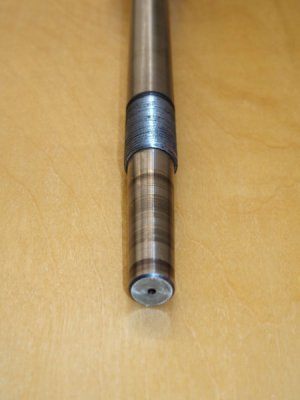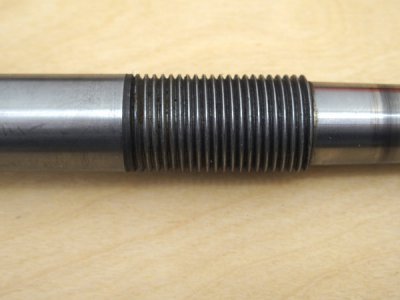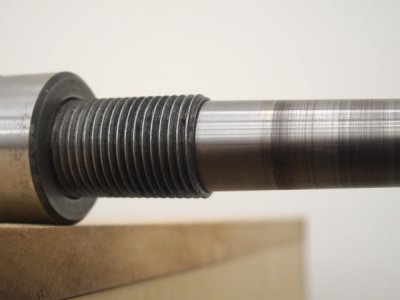I recently purchased a Delta-Rockwell 11-inch Metal Lathe via Craigslist. Inside the cabinet - along with other items - was this box.
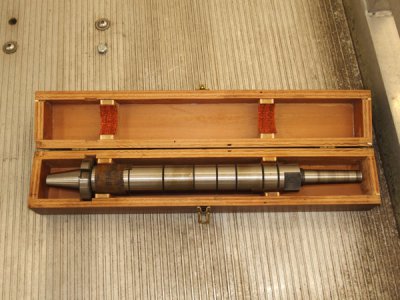
The object inside is 16-1/2 inches from end to end.
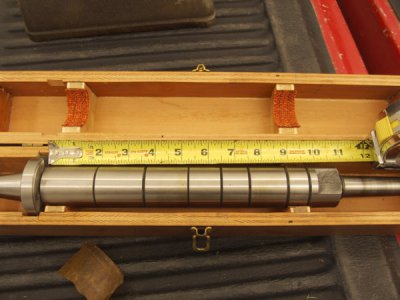
The diameter of the shaft with the spacers removed is 1". The spacer's outside diameter is 1-9/16" .
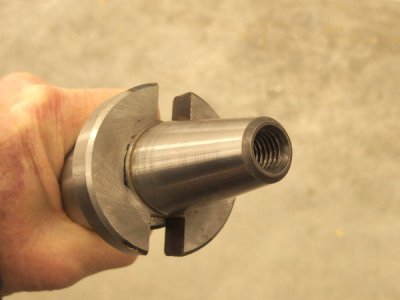
The thread inside this taper is 1/2"-13. I measure the wide part of the taper at 1.23". Most anything I've seen on the interweb that looks something like this is usually 1.25 as a spec.
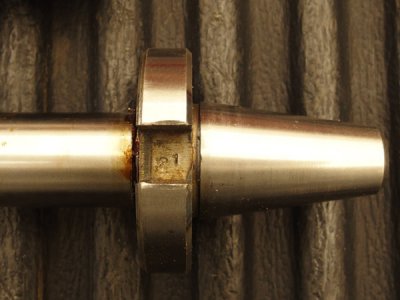
The only marks I've found on this item - or the box - is this "21" stamped inside the flange.
I've been told it appears to be an arbor for a Horizontal Mill and that is certainly what it favors. However, I haven't seen an example on the internet that has a taper on both ends.
Regarding the seller being asked for details... I am confident he would have no idea based on my interaction with him during the purchase.
Anybody have any thoughts?
Thanks,
Scott

The object inside is 16-1/2 inches from end to end.

The diameter of the shaft with the spacers removed is 1". The spacer's outside diameter is 1-9/16" .

The thread inside this taper is 1/2"-13. I measure the wide part of the taper at 1.23". Most anything I've seen on the interweb that looks something like this is usually 1.25 as a spec.

The only marks I've found on this item - or the box - is this "21" stamped inside the flange.
I've been told it appears to be an arbor for a Horizontal Mill and that is certainly what it favors. However, I haven't seen an example on the internet that has a taper on both ends.
Regarding the seller being asked for details... I am confident he would have no idea based on my interaction with him during the purchase.
Anybody have any thoughts?
Thanks,
Scott
Last edited:


